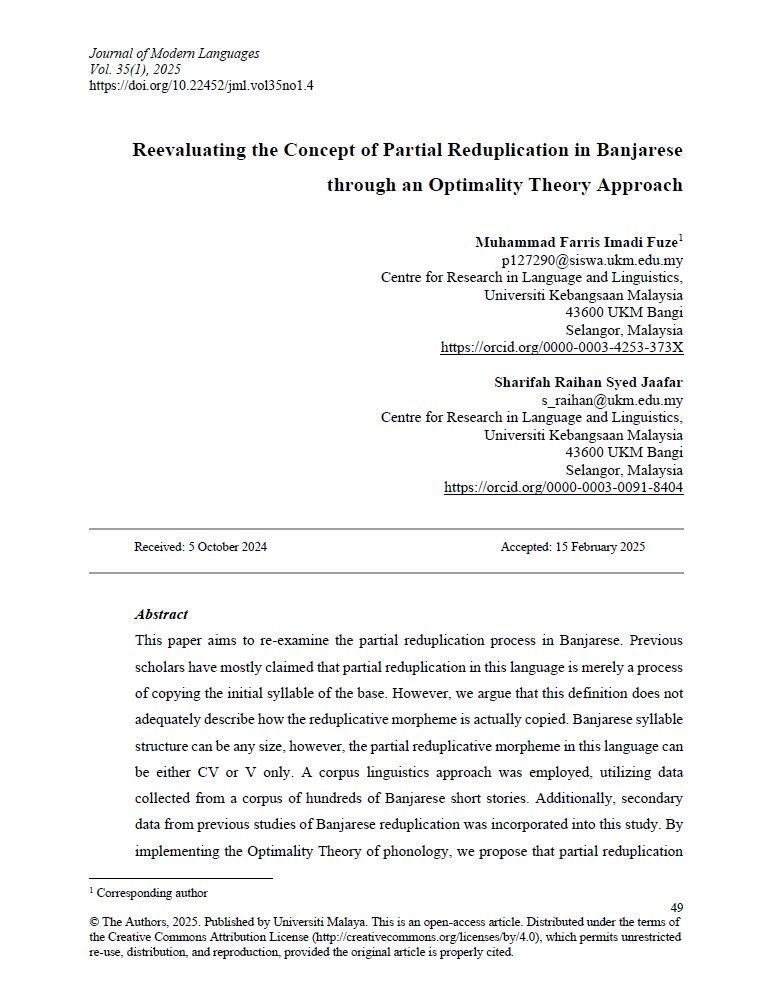Reevaluating the concept of partial reduplication in Banjarese through an optimality theoretic approach
Main Article Content
Abstract
This paper aims to re-examine the partial reduplication process in Banjarese. Previous scholars have mostly claimed that partial reduplication in this language is merely a process of copying the initial syllable of the base. However, we argue that this definition does not adequately describe how the reduplicative morpheme is actually copied. Banjarese syllable structure can be any size, however, the partial reduplicative morpheme in this language can be either CV or V only. A corpus linguistics approach was employed, utilizing data collected from a corpus of hundreds of Banjarese short stories. Additionally, secondary data from previous studies of Banjarese reduplication was incorporated into this study. By implementing the Optimality Theory of phonology, we propose that partial reduplication in Banjarese can be defined as copying the initial syllable of the base while ensuring that the reduplicative morpheme remains an open syllable in size. This means that the NOCODA constraint is essential to ensure that the reduplicative morpheme is either CV or V making it impossible for a consonant to emerge in the coda position of a syllable. Moreover, the light reduplicative morpheme represents an unmarked syllable structure that arises in Banjarese partial reduplication. This study aims to contribute to the existing body of research on Banjarese reduplication.
Downloads
Article Details

This work is licensed under a Creative Commons Attribution-NonCommercial 4.0 International License.

